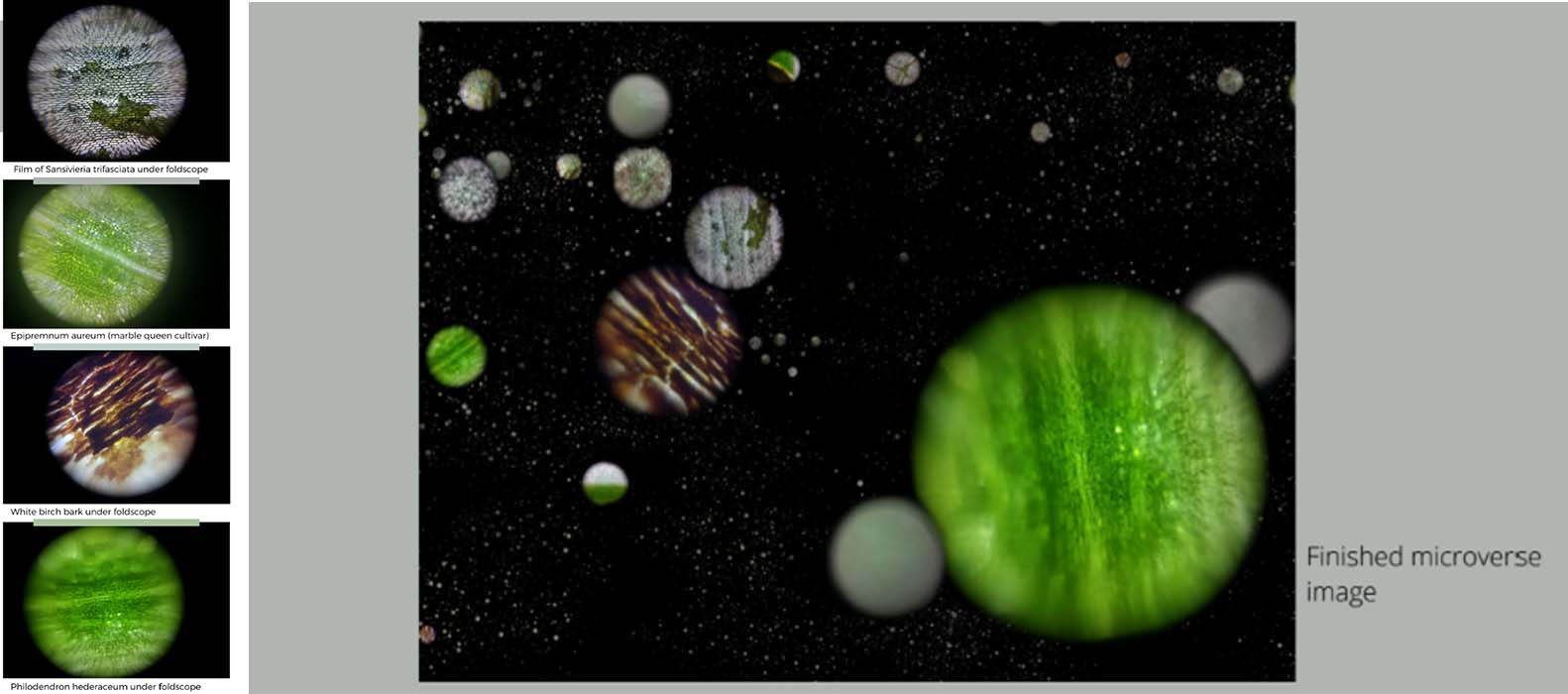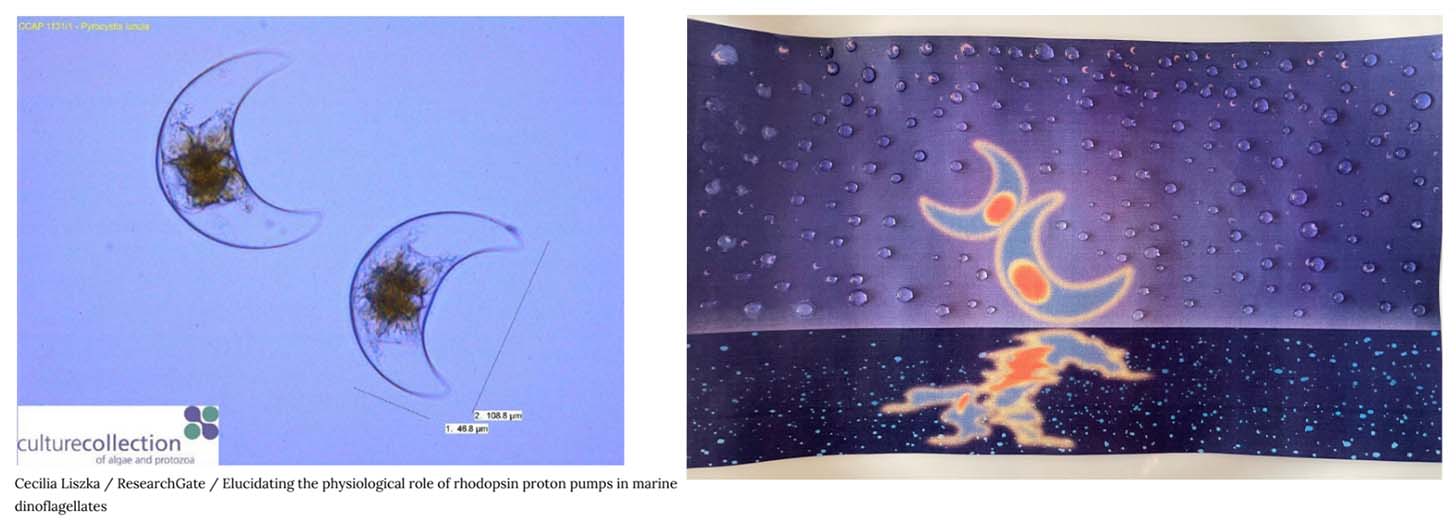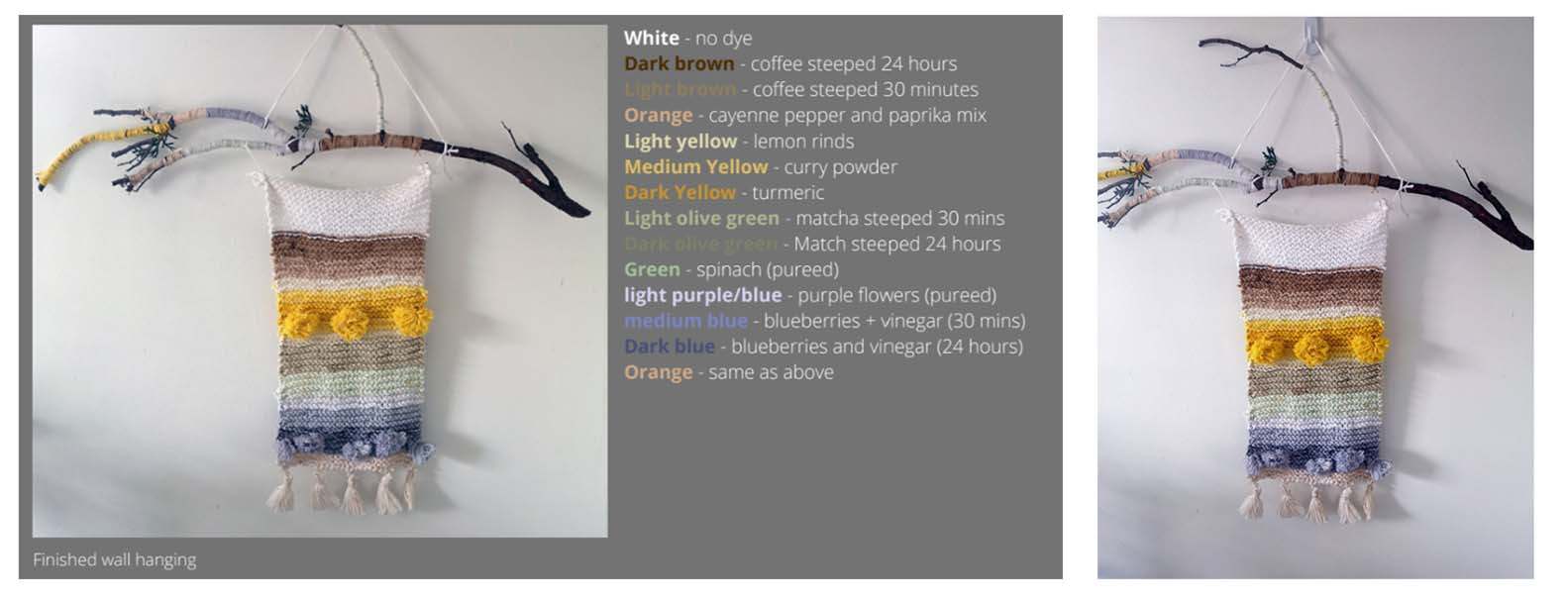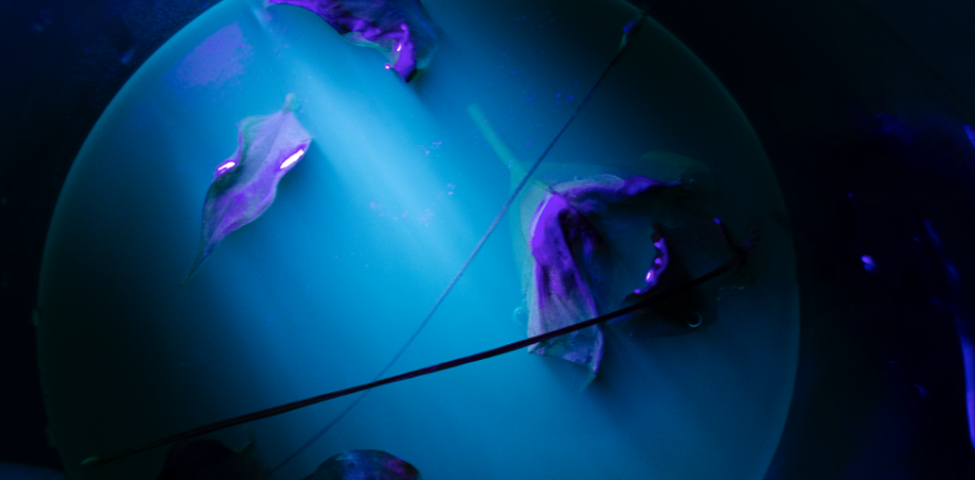BioART 2021 class project highlights
Written by: Nate Talbot
Featured image by: Mark Ariola
While it was a challenge adapting to shifting the Bioart class to online only, the creative responses our class had were inspiring! This proves that sometimes limitations can actually drive creativity. Although the list below reflects some of our favorites, the entire class made some amazing projects over the semester.
Microscopy Project
The students were tasked with utilizing a foldscope (an affordable paper microscope) and to use an image of a microscopic specimen to create an artwork.

Work by Lauren Szuki, 2021.
Mark Ariola let his specimens partially decompose before taking microscopic photos of them. Mark wanted to offer an alternative perspective to death and decay, and show that in a way the processes can be beautiful

Work by Mark Ariola, 2021.
Dinoflagellate Assignment (bioluminescent algae)
Each student was given a vial of bioluminescent algae that they had to utilize in an artwork. Although we had issues with this batch of algae and not all of them survived the duration of the assignment, there were still some very cool responses!
Bianca Daher was inspired by how under a microscope, some dinoflagellates take a crescent moon shape. Also, the moon is only visible at night, just like the algae. Bianca made a painting inspired by this idea, and then put droplets of the algae on its surface.

Work by Bianca Daher, 2021.
Natural Dyes Workshop
INCUBATOR team member Ashley Hemmings hosted a workshop on natural dyes made from common produce or foraged plants.
Lauren Szuki’s response to the workshop was incredible! She made a tapestry using dyed cotton yarn with thirteen different coloured dyes. She used ingredients including coffee, turmeric, blueberry, spinach, and matcha. For Lauren, “the yarn reminded me of when my grandma taught me how to knit when I was a child. Since we are in the middle of a global pandemic and I can't see her as often as I normally do, I decided to scrap my original idea and instead knit something that reminded me of her.”

Work by Lauren Szuki, 2021.
Shayenna Nolan’s response to the assignment was beautiful and educational. As part of her research for the Healthy Headwaters lab, she studies organic matter breakdown in local waterways using cotton strips as a stand in for leaves. Shayenna decided to arrange the strips in a gradient.
The rate of organic matter breakdown is an indicator of microbial and invertebrate feeding activity. Each strip was left in a waterway for over a month, and the colour of the strips indicate different things. For example, if the strip is a brownish colour, this indicates “soil erosion and runoff from farm fields. Urban streams are often disconnected from the soil and landscape by impervious surfaces and are green in hue because of the high algal content of the water.” Additionally, the white strips indicate an environment where algae cannot grow.

Work by Shayenna Nolan, 2021.
Mycelium Workshop
This workshop was taught by Toronto-based bioartist Tosca Teran. The students were tasked with propagating mycelium from store-bought mushrooms. The students sterilized cardboard strips, and then rolled mushroom stems in the cardboard.
Bianca Daher’s response to the assignment was an experimental ink painting inspired by the mycelial growth.

Work by Bianca Daher, 2021.
Szaky Wu’s response to the assignment was very innovative! She reused yogurt containers and painted mycelium-inspired designs on them. She then placed the dried mushroom caps on top of

Work by Szaky Wu, 2021.
DIY Microbial Art
For this assignment the students had to follow a recipe for a home-made agar medium developed by INCUBATOR lab members Aleeza, Kadila, and Hadia.
Nicole Van Rooyen followed her morning routine and grew bacteria from each surface. She then photoshopped the bacteria back onto the objects. Nicole “ swabbed the kitchen light switch, my phone, my mouth, and the bathroom doorknob, and rubbed it on one agar each. Then I let the agar sit covered in plastic wrap for two weeks to grow bacteria. After the bacteria was grown, I took close up photos of each one. Then using Photoshop, I made it seem like the respective bacteria was growing on its respective surface.”

Work by Nicole Van Rooyen, 2021.
A cool detail of one of the agar recipes was that the jello fluoresced under a black light. Mark Ariola was intrigued by this effect and took some stunning photographs of the glowing jello specimens.

Work by Mark Ariola, 2021.
From the INCUBATOR Art Lab team and Dr. Willet, thanks to the class for a wonderful semester! It was a pleasure seeing all of the incredible responses to the assignments (there were too many to choose from!) This semester has proved that bioart can be done anywhere, and is not exclusive to a lab.

